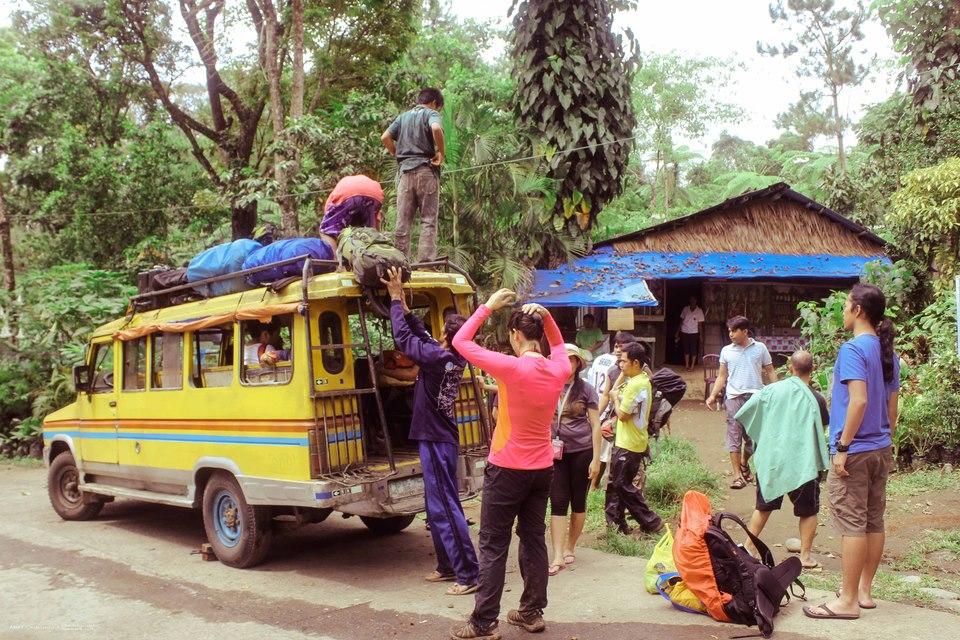MT. KANLAON (GUINTUBDAN TRAIL)
Negros Occidental
Entrance/Exit point: Guintubdan, Ara-al, La Carlota City
LLA: 10°24'44"N, 123°7'55"E, 2435 MASL
Days required / Hours to summit: 3-4 days / 8 hours
Specs: Major climb, Difficulty 8/9, Trail class 4
BACKGROUND

The country's largest active volcano and Visayas' highest mountain is Mt. Kanlaon in Negros Island. As the highest mountain in the Visayas, it is majestic. As the country's largest active volcano, it is fearsome. Its majesty lies in its forests, waterfalls, lagoons, and culminates in its crater, vast and desolate. However, this seat of majesty is also the source of Mt. Kanlaon's volcanic wrath. It is, after all, one of the most active volcanoes in the Philippines. Its 1996 eruption killed 7 mountaineers - in an account vividly recalled to the blogger by Rey Castellos, the guide who rescued some of the foreign climbers and witnessed the eruption, barely making it alive.
The place that Mt. Kanlaon holds for the people of Negros is irreplaceable and important in many aspects of their life. Culturally, Kanlaon is central to the loyal mythology, named after no less than Kan Laon, the supreme deity. Some tribes also hold Kanlaon to be center of the universe - its crater a portal into the unknown source of fire and energy. Attesting to the plurality of legends the mountain has inspired, children also grew up to the tales of "La-on and the Seven-Headed Dragon" .
In this tale, a dragon appeared from the mountain, wreaking havoc in the whole island. In order to appease the dragon, the people had to sacrifice one beautiful maiden each year, until they have run out of women, save for the king's daughter. The King, agonized, offered a reward to anyone who could kill the dragon. Then comes a prince named La-on, whose affinity with nature and animals helped him slay the dragon - winning the princess' hand and earning the mountain as a tribute for his feat, hence Kan Laon, meaning "The Exalted" Laon, later becoming Kanlaon. Economically, the highland domain of Kanlaon is the source of vegetables and fruits in the same way that Benguet is the 'Salad Bowl' of Luzon. It provides a home for a lot of communities, who earn their livelihood from the forest products.

Ecologically, Kanlaon is another biodiversity haven, home to about 197 species of flora and an impressive roster of fauna, such as the endangered Philippine spotted deer and the Visayan Warty Pig. Of course, the geologic importance of Kanlaon attracts foreign tourists who want to see the country's third most active volcano (next to Mayon and Taal) in its volcanic glory. But also because of this danger, close coordination with DENR is a must when climbing the mountain. The most comprehensive trip to Kanlaon involves taking the Wasay and Guintubdan trails. The Wasay trail starts from the mountain resort of Mambucal, requiring two arduous days of trek just to reach the crater. Invariably, it has been compared to trekking in Mt. Halcon and is said to be one of the most difficult and longest trails in the Visayas. The first day passes by dipterocarp forests, set in rolling slopes. The culmination of the seven-hour hike is Harding Sang Balo (Garden of the Widow), a campsite with a nearby water source. Here marks the transformation of the forest from the tall diperocarps to the montane variety. The next day is a feast for the eyes. Although a total of 164 different obstacles lie in wait on this most difficult leg of the journey, dubbed by local guides as the "Killing Me Softly" trail, there are beautiful sights such as the lagoons (Samoc lagoon, PMS lagoon). These lagoons are actually old craters of Kanlaon.
The breathtaking Margaha Valley is next, and finally, after crossing the valley ridge, the cone-shaped summit-crater. Said to be the center of the universe in some myths, the crater of Kanlaon is vast and deep, devoid of vegetation and is comprised of pyroclastic material. There is a sense of fear and wonder in camping in the summit area - the volcano can erupt anytime. The third day is the descent to Guintubdan. This could only take five hours, and is easier than the Wasay trail. The highlight is seeing the Twin Falls of Guintubdan. There are other waterfalls in the area, although they have to be visited separately. There are a myriad of sidetrip possibilities. To begin with, one can stay at Mambucal Resort prior to the climbing, dipping in its hot sulfur springs or swimming in the pools. There is also a lagoon and an available trek to several waterfalls. There are also the nearby mountains such as Mts. Silay and Mandalagan (N), and Mt. Talinis, also known as Mt. Cuernos de Negros (S). The nearby islands of Guimaras and Siquijor are also good options -- although Guimaras is more of a possibility when climbing using these trails (Siquijor is more proximate if using the Canlaon City trails). Climbing Mt. Kanlaon - the active volcano and the majestic mountain - is truly a profound experience that must not be missed in one's lifetime.

Note:
Thanks to PinoyMountaineers.com owned by Dr. Gideon Lasco for the informations we used in this website.

